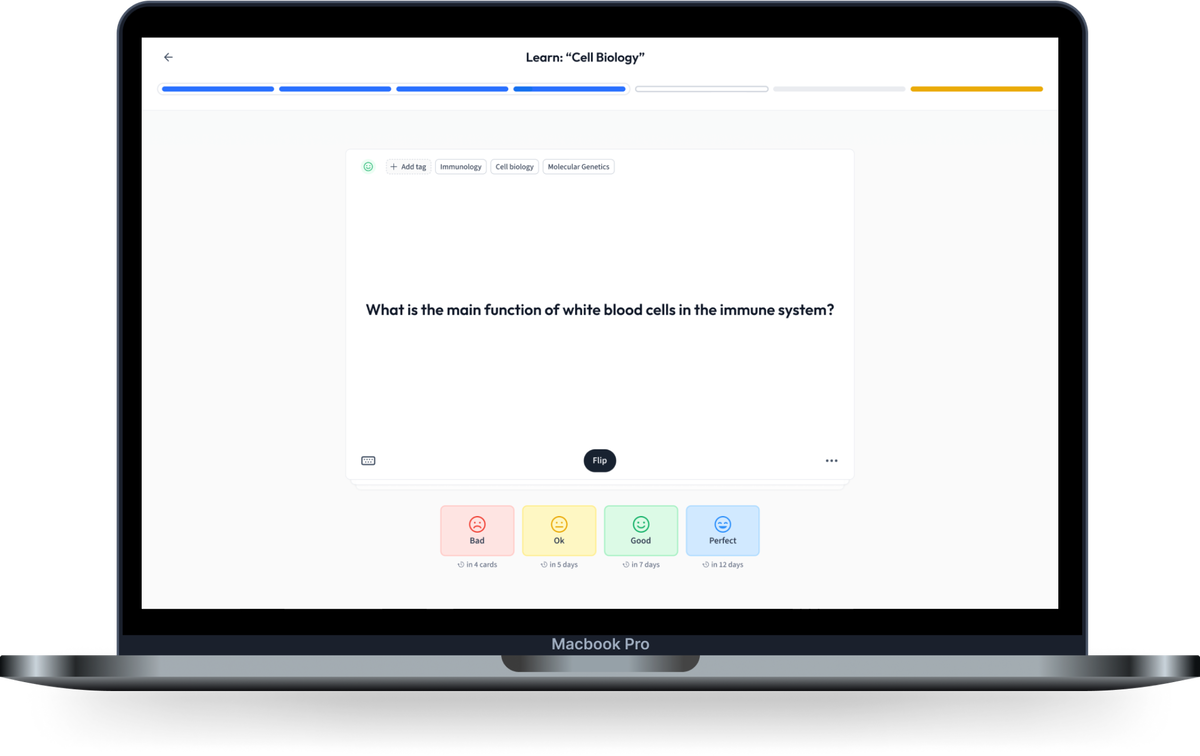Understanding Schizophrenic Disorders in Psychology
Schizophrenic disorders, a complex topic in psychology, are manifold conditions that influence a person's ability to think, feel, and act. People with this type of disorder may seem like they have lost touch with reality and often face the challenge of managing symptoms such as hallucinations and delusions. By unpacking the concept of schizophrenic disorders, diving into the different types, and uncovering their causes, you can gain a comprehensive understanding of these psychological health conditions.
Defining Schizophrenic Disorders in Clinical Psychology
Schizophrenic disorders are a group of severe mental health conditions that alter a person’s perception of reality, ovulate their thoughts, disturb their behaviours, and disrupt their emotional feelings. This disorder often presents in late adolescence or early adulthood and is marked by episodes of psychosis.
These disorders can substantially influence a person's daily life and envelop numerous domains like personal relationships, academic achievement, and employment status. They also confer major hurdles to the person's feelings of self-esteem and self-worth.
The Different Types of Schizophrenic Disorders
Understanding the variety in schizophrenic disorders is significant, as it helps explain the substantial differences in symptomology among individuals diagnosed with this disorder.
Exploring the 5 Types of Schizophrenic Disorders
There are five commonly recognised types of schizophrenic disorders, each characterised by unique symptoms and manifestations.
- Paranoid Schizophrenia
- Disorganized Schizophrenia
- Catatonic Schizophrenia
- Undifferentiated Schizophrenia
- Residual Schizophrenia
For instance, individuals diagnosed with paranoid schizophrenia are often dominated by delusions of persecution, or by auditory hallucinations. On the other hand, those with disorganized schizophrenia exhibit symptoms such as thought disorder, chaotic behavior, and flat or inappropriate affect.
Identifying the Causes of Schizophrenic Disorders
The causes of schizophrenic disorders are multifaceted and often stem from a combination of genetic, physical, environmental and psychological factors.
For instance, certain genetic mutations may contribute to an increased risk of developing the disorder. Additionally, imbalances in chemicals in the brain, such as neurotransmitters dopamine and glutamate, may also be involved. Moreover, exposure to toxins or viral infections in the womb and early developmental problems are also considered contributing risk factors.
It's important to note that while these factors might increase the risk of developing the disorder, they are not decisive. Many people with these risk factors never develop schizophrenic disorders, indicating the complexity of its causes and the interactive effects of multiple factors.
Schizophrenic Disorder Diagnosis
Navigating the path to the accurate diagnosis of schizophrenic disorders is a step-by-step process that incorporates careful observation, multiple screenings, and assessments. Diagnosing schizophrenia is not a straightforward task because its symptoms can mirror those of other mental and neurological disorders. Thus, precise diagnostic procedures play a crucial role in identifying this disorder.
Steps in the Diagnosis of Schizophrenic Disorders
The diagnosis of schizophrenic disorders usually involves multiple steps to ensure accuracy and eliminate the possibility of other mental health conditions that may exhibit similar symptoms.
- Comprehensive Medical Evaluation
- Psychiatric Evaluation
- Screening and Assessments
- Diagnostic Criteria for Schizophrenia
A comprehensive medical evaluation investigates potential physical causes that could be responsible for the symptoms. This includes ruling out substance-induced conditions or potential medical illnesses.
The succeeding psychiatric evaluation, conducted by a mental health professional, scrutinizes a person's mental state by observing their appearance, demeanor, and capacity to think, reason, and express themselves. Interviews about thoughts, feelings, and behaviors associated with daily life, potential symptoms, family history, and impact on personal relationships are conducted.
Following the psychiatric evaluation, screening and assessments help to further support a diagnosis. Common tools used include psychometric tests, like the Positive and Negative Syndrome Scale (PANSS). These assessments play an important role in evaluating the occurrence and severity of symptoms.
Lastly, the Diagnostic and Statistical Manual of Mental Disorders (DSM-5), which sets the standard criteria for classifying mental health conditions, provides the final benchmark for diagnosis. According to DSM-5, for a diagnosis of schizophrenia, a person must exhibit at least two of the following five symptoms for a significant portion of time during a 1-month period: delusions, hallucinations, disorganized speech, disorganized or catatonic behavior, or negative symptoms.
The Role of Clinical Psychology in Schizophrenic Disorder Diagnosis
Clinical psychology holds a pivotal role in the diagnosis of schizophrenic disorders. Clinical psychologists are specialized health care professionals who assess, diagnose, and treat individuals suffering from psychological disorders, including schizophrenia.
They are skilled in the administration of various psychological tests for diagnosing disorders and the provision of psychotherapy for the treatment of conditions.
Psychotherapy, also known as talk therapy or counseling, is a therapeutic treatment approach involving regular discussions between the patient and a mental health professional to make sense of the disorder and construct coping mechanisms.
Clinical psychologists also offer crucial following up care and ensure regular evaluations to monitor the progress or reassess the treatment approach if need be. They can also provide adequate resources or referrals to family members which aids in their understanding and assist in providing support to the patient.
For example, Cognitive Behavioural Therapy (CBT), a type of evidence-based therapy, has been shown to be effective in treating hallucinations and delusions, which are among the main symptoms of schizophrenia. These sessions with clinical psychologists can help individuals cope with their symptoms and lead functional, fulfilling lives.
It's essential to remember that the role of clinical psychology in diagnosing and treating schizophrenia, like any other mental disorder, should be part of an integrated, multidisciplinary approach involving the contribution of multiple different medical specialists for the best patient outcomes.
Schizophrenic Disorders vs Mood Disorders
Schizophrenic disorders and mood disorders are both categories of mental health conditions, with their unique characteristics, symptoms, and treatment options. While both can considerably impact a person's behaviour and ability to function in everyday life, their core differences primarily reside in the symptoms they predominantly present, their underlying causes, and treatment strategies.
Describing the Differences Between Schizophrenic Disorders and Mood Disorders
A vital difference between schizophrenic disorders and mood disorders lies in their defining characteristics. The primary features of schizophrenic disorders revolve around an altered perception of reality, including symptoms such as hallucinations and delusions.
Hallucinations refer to false perceptions, such as hearing, seeing, or feeling something that's not there. Delusions, on the other hand, are fixed false beliefs that conflict with reality.
Conversely, mood disorders, also known as affective disorders, primarily distort a person's mood or persistent emotional state. The two widely recognised types of mood disorders include depression and bipolar disorders.
| Schizophrenic Disorders | Mood Disorders |
| Predominantly characterised by alterations in reality perception, including hallucinations and delusions. | Primarily characterised by extreme mood swings, like extraordinarily low mood (depression) or exceedingly elevated mood (mania). |
For instance, a person with major depressive disorder, a type of mood disorder, experiences persistent sadness, loss of interest in activities, and difficulties in performing daily tasks, with these symptoms lasting for a minimum of two weeks. On the other hand, bipolar disorder is marked by episodes of extreme euphoria and elevated self-worth, known as mania, accompanied by depressive episodes.
Core Attributes of Schizophrenic Disorders versus Mood Disorders
The etiology, the study of causation or origination, also varies between schizophrenic and mood disorders, reflecting their inherent differences.
Schizophrenic disorders are believed to be a complex interplay of genetic, chemical, and environmental factors. These include genetic vulnerabilities, imbalances in brain chemistry, and potential exposure to viruses or malnutrition before birth.
As for mood disorders, the causes are multifaceted, involving a combination of biology, genetics, environment, and psychology. Neurotransmitter imbalance in the brain, significant life events, such as trauma or stress, and genetic risk factors can all contribute to the development of mood disorders.
Neurotransmitters are chemical messengers in the brain that transmit signals across nerve cells. An imbalance in neurotransmitters, such as serotonin and dopamine, is believed to be involved in mood disorders.
The treatment approach also varies between these disorders and is outlined below in the table:
| Schizophrenic Disorders | Mood Disorders |
| Combination of antipsychotic medications and psychotherapy. | Combination of antidepressants, mood stabilisers, psychotherapy, or cognitive-behavioral therapy. |
For instance, a person with schizophrenia might be prescribed antipsychotic medications to reduce symptoms such as hallucinations and delusions and engaged in cognitive behavioral therapy to help them cope with the impact of these symptoms on their life.
In contrast, mood disorders might be treated with antidepressants or mood stabilisers, as well as psychotherapy, cognitive behavioural therapy or, in severe cases, electroconvulsive therapy.
Each type of disorder, though distinct, requires a comprehensive, individualised treatment approach that targets their unique factors. Therefore, understanding these essential differences helps in laying the foundation for targeted and effective therapeutic interventions.
Schizophrenic Disorders - Key takeaways
- Schizophrenic disorders are defined as a group of severe mental conditions that alter a person’s perception of reality, ovulate their thoughts, disturb their behaviours, and disrupt their emotional feelings.
- There are five commonly recognised types of schizophrenic disorders: Paranoid Schizophrenia, Disorganized Schizophrenia, Catatonic Schizophrenia, Undifferentiated Schizophrenia, and Residual Schizophrenia.
- The causes of schizophrenic disorders often stem from a combination of genetic, physical, environmental and psychological factors.
- Diagnosis of schizophrenic disorders usually involves multiple steps including comprehensive medical evaluation, psychiatric evaluation, screening and assessments, and following the diagnostic criteria for schizophrenia as per the DSM-5.
- Schizophrenic disorders differ from mood disorders primarily in the symptoms they predominantly present, their underlying causes, and treatment strategies. Schizophrenic disorders are characterised by alterations in reality perception, including hallucinations and delusions, while mood disorders are characterised by mood distortions.


Learn with 177 Schizophrenic Disorders flashcards in the free StudySmarter app
We have 14,000 flashcards about Dynamic Landscapes.
Already have an account? Log in
Frequently Asked Questions about Schizophrenic Disorders


About StudySmarter
StudySmarter is a globally recognized educational technology company, offering a holistic learning platform designed for students of all ages and educational levels. Our platform provides learning support for a wide range of subjects, including STEM, Social Sciences, and Languages and also helps students to successfully master various tests and exams worldwide, such as GCSE, A Level, SAT, ACT, Abitur, and more. We offer an extensive library of learning materials, including interactive flashcards, comprehensive textbook solutions, and detailed explanations. The cutting-edge technology and tools we provide help students create their own learning materials. StudySmarter’s content is not only expert-verified but also regularly updated to ensure accuracy and relevance.
Learn more




